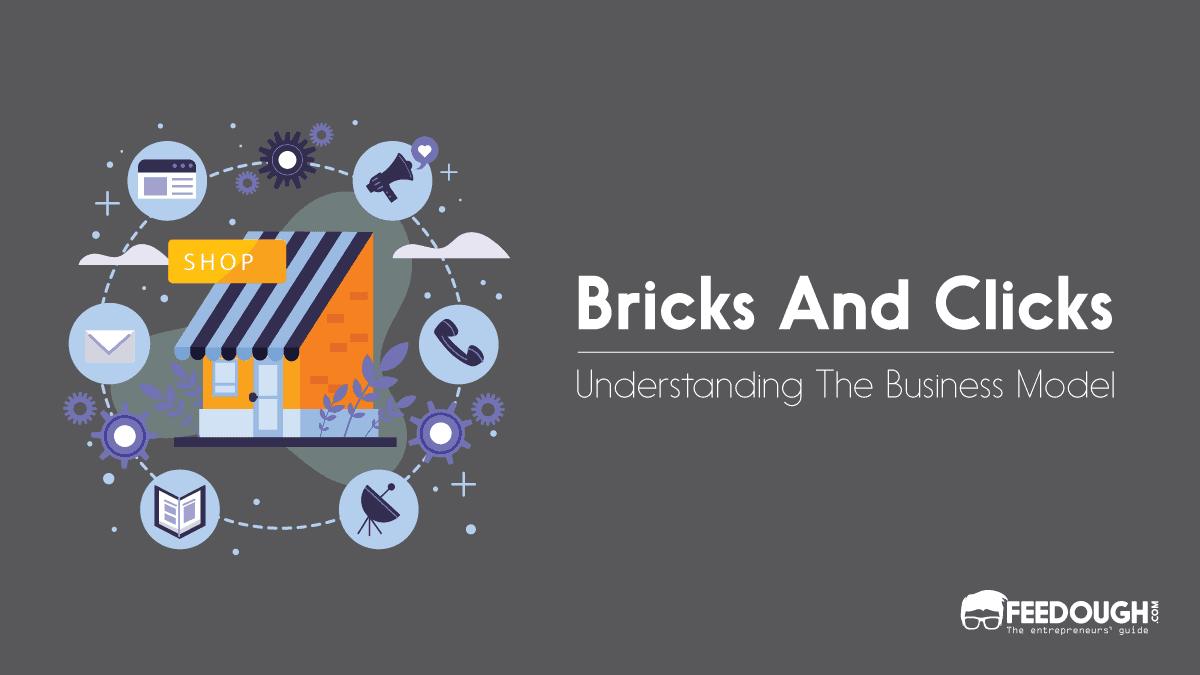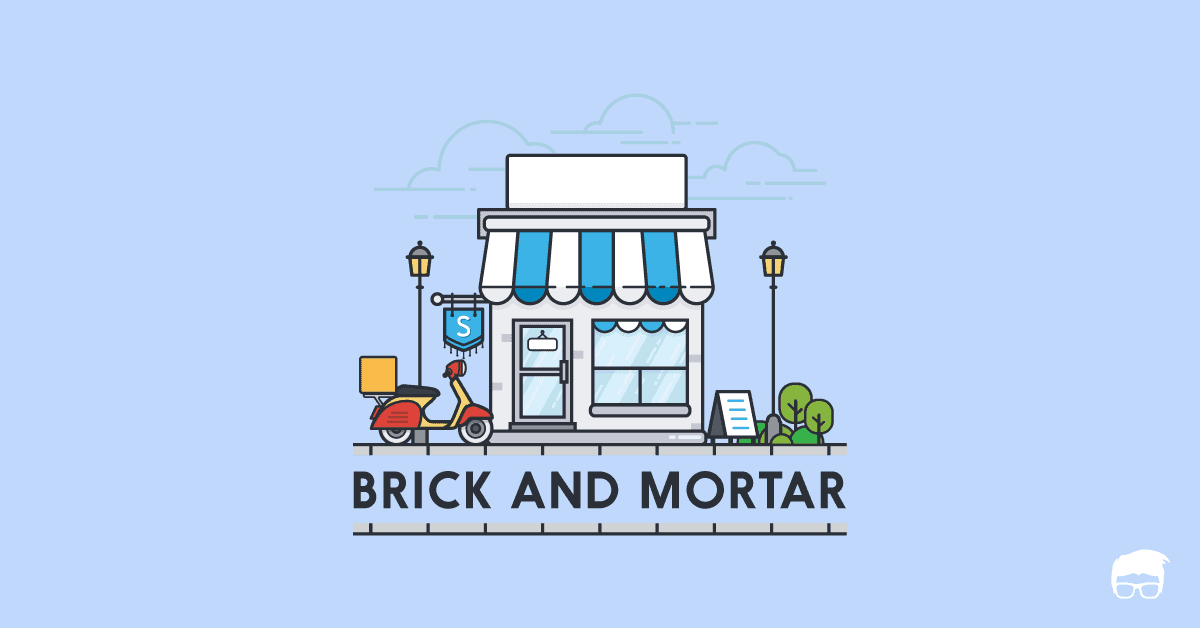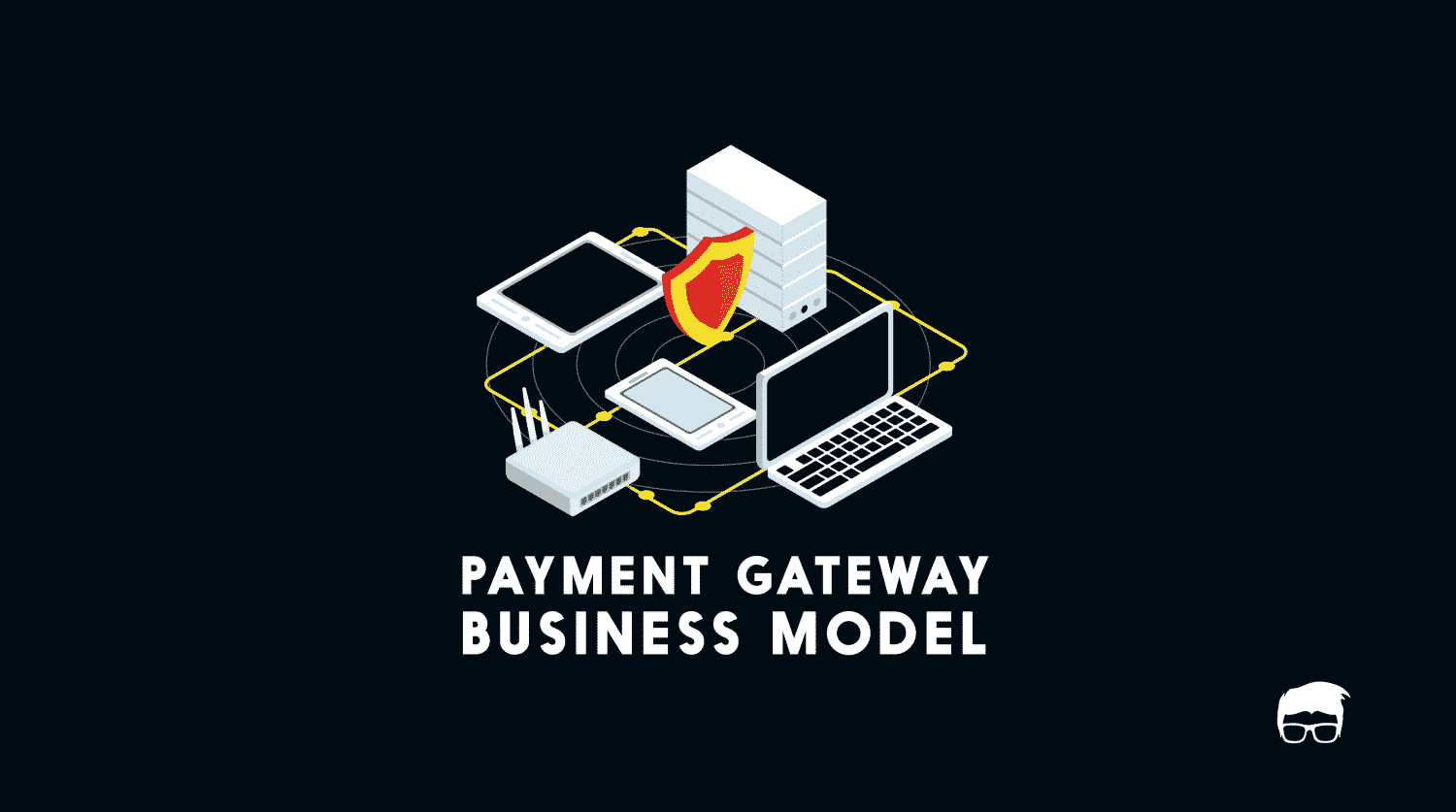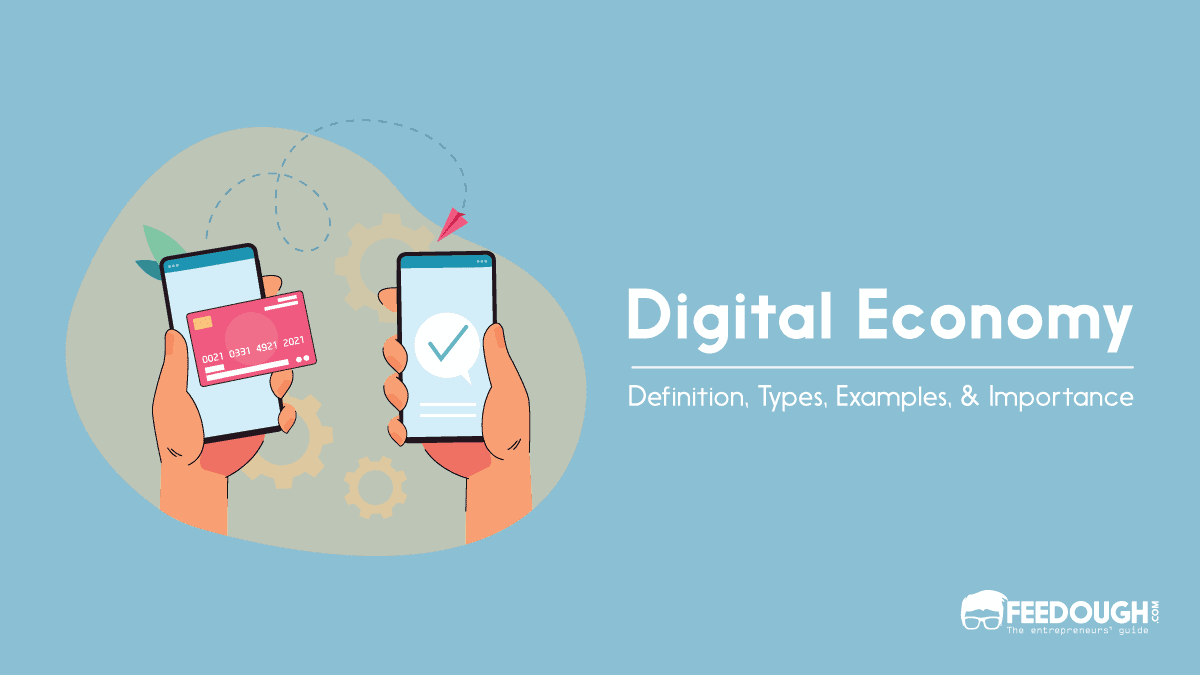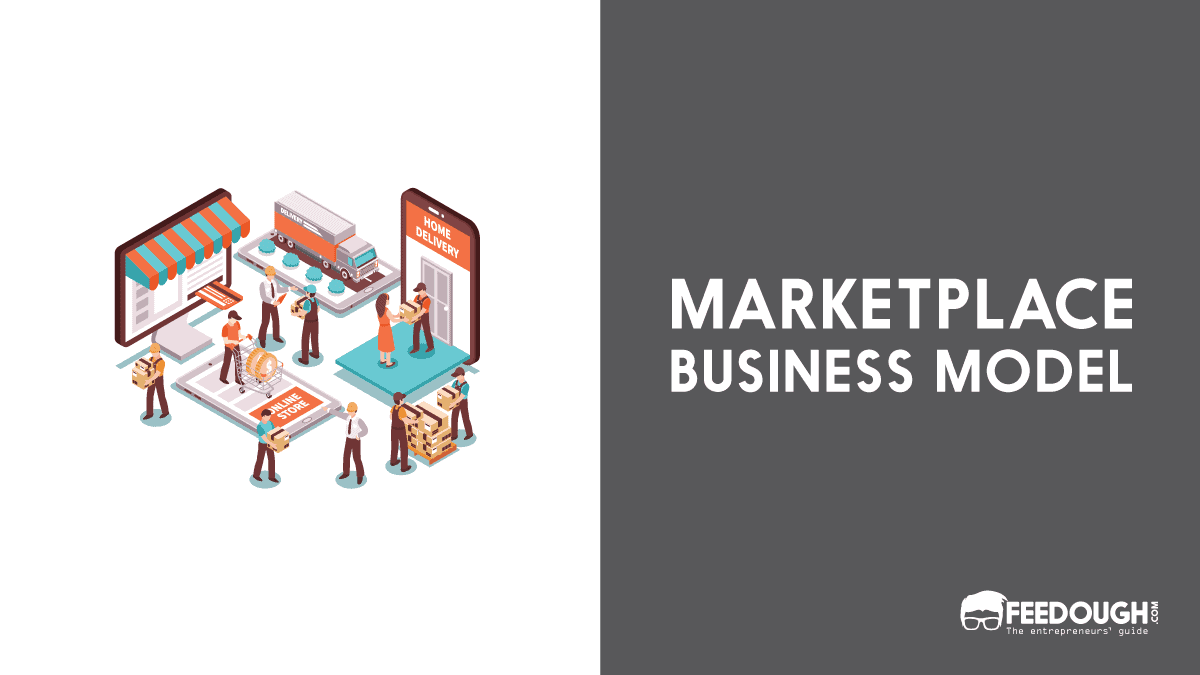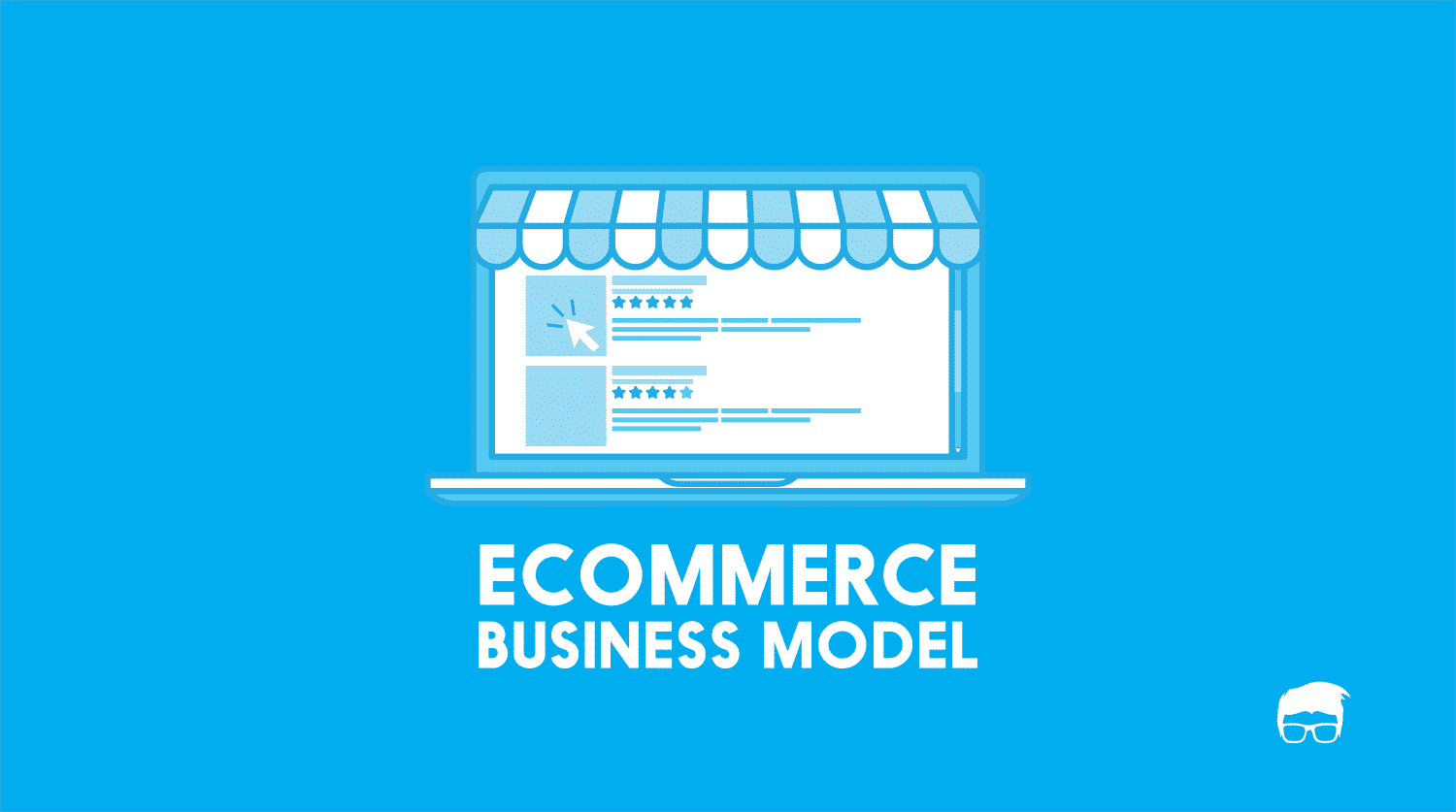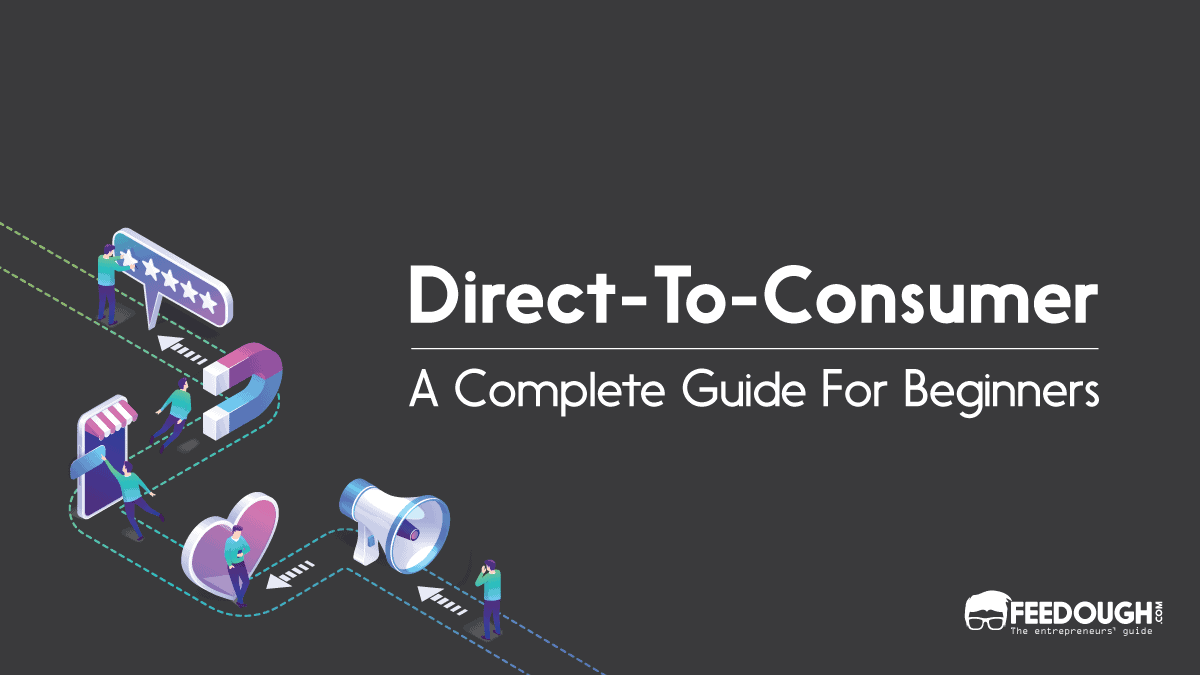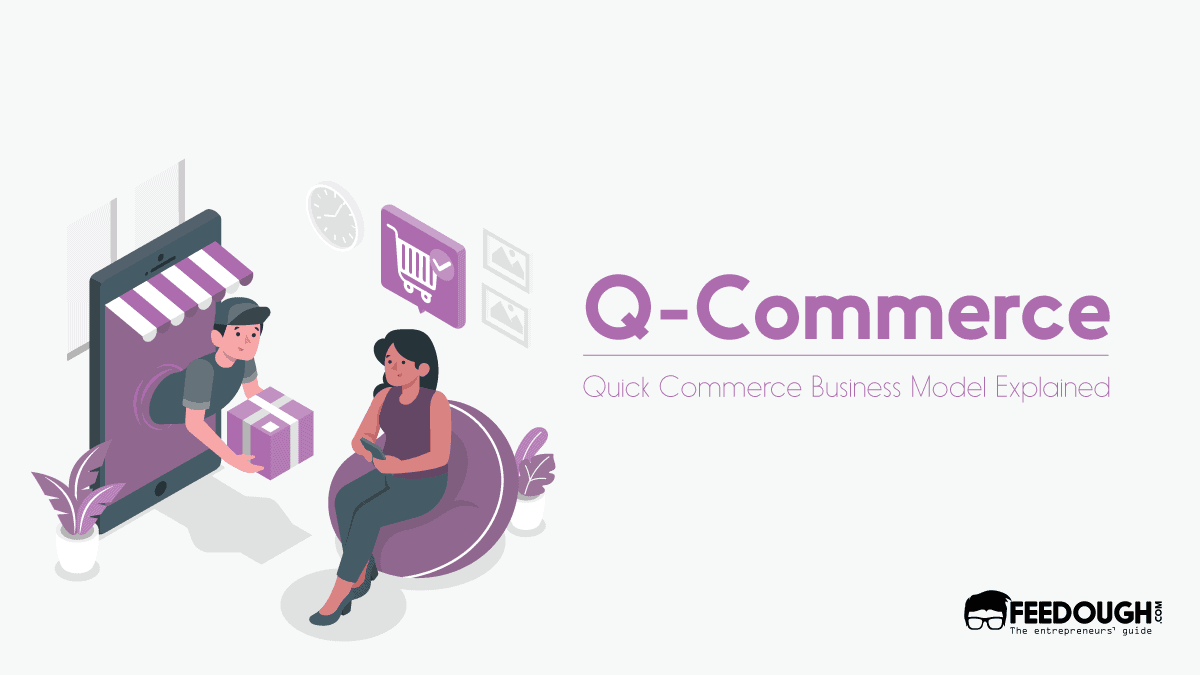The internet revolution has made it easier than ever before for businesses to reach their target customers. Today, if a business isn’t online, it’s missing out on a lot of opportunities. This is why many businesses are now using the bricks and clicks business model.
The bricks and clicks model combines traditional brick-and-mortar stores with digital storefronts. By offering both physical locations for customers to purchase their goods as well as online web stores, companies aim to offer the best of both worlds, catering to the needs and preferences of a wider range of customers while building stronger relationships with existing ones.
This business model has gained popularity in recent years, allowing businesses to reach a wider audience by providing customers with multiple channels to interact with their brand.
But what is the bricks-and-clicks business model, how does it operate, and why should businesses consider implementing it?
Let’s find out.
What Is Bricks And Clicks Business Model?
A bricks-and-clicks business model is a hybrid approach to retailing and e-commerce, where a business offers both a physical store location and an online presence.
Also known as ‘click-and-mortar’ and ‘brick-and-click’, this model combines the convenience and immediacy of a traditional store location with the ease and accessibility of an online platform.
For instance, customers have the convenience of shopping from home when they use the company’s website, but can also visit the physical store to try on the products or speak to a salesperson.
The ultimate goal of a bricks-and-clicks business model is to provide customers with maximum convenience while ensuring the company’s sustainability and profits.
A real-life example of a bricks-and-clicks business model is the retail giant Walmart. The company’s hybrid business model offers customers the option of shopping online or at physical store locations.
Walmart also offers its customers the convenience of shopping from home and picking up their orders in-store, as well as ordering online and then returning items to a local store location. This kind of flexibility provides customers with options that suit their individual needs while allowing Walmart to maintain a presence both in the physical and virtual marketplace.
The History Of Bricks And Clicks Model
The bricks and clicks business model was developed to solve the difficulty of providing customers with a seamless and holistic shopping experience, both online and in-store.
It can be argued that a Pizza Hut pizza ordered over the internet in 1994 was one of the earliest recorded purchases made from a company that employed bricks and clicks business model.
Soon after that, in the early 1990s, companies such as Walmart and Sam’s Club began experimenting with the idea of combining an online presence with their physical stores. They offered customers the convenience of browsing products on a website before making a purchase. From these beginnings, the bricks-and-clicks business model was born.
Bricks-And-Clicks vs Brick-And-Mortar
The bricks-and-clicks model is the successor to the traditional brick-and-mortar model, which has been used for decades by retailers. The biggest difference between these two models lies in how customers shop. In a bricks-and-click business model, customers can shop online and at physical store locations simultaneously, whereas, in a brick-and-mortar model, customers are limited to shopping at physical store locations.
Feature | Bricks-and-Clicks | Brick-and-Mortar |
|---|---|---|
Business Model | Combination of online and physical retail presence | Physical retail presence only |
Sales Channels | Online store, mobile app, and physical retail locations | Physical retail locations only |
Customer Reach | Local, regional, national, and international customers | Primarily local and regional customers |
Convenience | Visit the physical store during business hours | Visit physical store during business hours |
Inventory Management | Centralised inventory management for both channels | Inventory management for physical store only |
Customer Experience | In-store and online experience, often with integration | In-store experience only |
Target Market | Wide range of customers, varying demographics | May target specific demographics |
Personalisation | Offers personalised recommendations (online) | Limited to in-store assistance |
Marketing | Utilises digital and traditional marketing strategies | Primarily relies on traditional marketing |
Data Collection | Collects customer data online and in-store | Limited to in-store data collection |
Expansion Potential | Can scale quickly with online sales and physical stores | Expansion requires new physical locations |
Operating Costs | Requires investment in both physical and digital assets | Focus on physical assets and expenses |
Who Is The Customer Of Bricks And Clicks Business Model?
The bricks and clicks business model is designed to appeal to customers who are looking for a convenient and personalised shopping experience.
It can include customers who prefer the convenience of shopping online but also value the ability to see and touch products in person before making a purchase. While on the other side, it may also include customers who are looking for a more personalised shopping experience, with the ability to interact with knowledgeable staff and receive recommendations based on their individual needs and preferences in-store.
Ultimately, the Bricks-and-Clicks business model aims to cater to a wide range of customers, with its flexibility to meet customers’ needs and preferences through multiple retail channels.
The Value Proposition
As the value proposition is always linked to the needs of the customer, this model offers a unique value proposition that addresses the changing needs of modern consumers, i.e., Flexibility and Convenience.
With the rise of ecommerce and the increasing demand for personalised online and offline shopping experiences using this model, retailers are now enabled to cater to a wide range of customers and preferences.
By combining physical and digital channels, businesses leverage the strengths of each channel to create a more comprehensive and seamless shopping experience for their customers.
This not only enhances customers and satisfies the changing shopping needs but also provides businesses with a competitive advantage in the marketplace.
Bricks And Clicks Model’s Key Components
The bricks and clicks model aims to:
- Provide convenience to the customers
- Provide a seamless experience of shopping online and in-store to the customers
- Gain the customers’ trust and loyalty, and thus generate higher revenue.
But to achieve these goals, the model is composed of three major components:
- Online Channel: This channel allows customers to buy products and services safely, quickly and conveniently from the comfort of their home or office.
- Physical Store/ Retail Outlet: This physical presence offers an opportunity to meet customers in person, build relationships, provide product demonstrations and get feedback on new product ideas.
- Connectivity: This is the bridge between the online presence and the physical store, allowing customers to move seamlessly from one channel to another. It also ensures information gathered from both locations is integrated into a single view for better decision-making.
Revenue Streams Of Bricks And Clicks Model
The revenue strategies of bricks and clicks business are typically based on a combination of revenue streams from both the physical and online channels. Here are some common revenue streams for the bricks-and-clicks model:
- Sales revenue: This is the most basic revenue stream for a bricks and clicks business. It involves generating revenue through in-store and online sales of products or services. This revenue can come from various sources, including direct sales, affiliate marketing, and online advertising.
- Click-to-brick: Many bricks-and-clicks businesses integrate this model into their business model, offering customers to purchase products online and pick them up in-store. This generates revenue from both online purchases and in-store visits. As visiting the store may get the customer to buy more using the Gruen effect and make them purchase more stuff.
- Delivery fees: If the business offers home delivery of products purchased online, they may charge delivery fees to customers that will contribute to generating additional revenue.
- Subscription models: Bricks and clicks businesses may also offer subscription models to customers, such as loyalty programs, VIP memberships, or premium services that provide access to exclusive offers and discounts.
- Service fees: Some bricks-and-clicks businesses offer additional services to customers, such as product installation or repair services, which generate revenue through those service fees.
Overall, the revenue streams for bricks and clicks businesses are designed to leverage the strengths of both the physical and online channels to generate revenue from multiple sources. By providing customers with a seamless and convenient shopping experience across both channels, bricks and clicks, businesses can maximise their revenue potential.
Advantages Of The Bricks and Clicks Model
Be it the business or the customer, the bricks and clicks model provides numerous advantages.
For The Businesses
The biggest advantage is the increase in sales and market reach. By having a physical presence, a business can engage with its customers on a more personal level, which may help to build loyalty. Additionally, having both channels allows businesses to cover wider geographical areas and tap new markets they may not have been able to access before.
Besides this, here are some other advantages of the bricks and clicks model for businesses:
Improved Flexibility Of Operations
Unlike brick-and-mortar businesses, where operations are limited by geographical boundaries, bricks and clicks businesses benefit from being able to offer their products and services to a much broader customer base.
For example, using the bricks-and-clicks model, a simple grocery store in a small town can expand its business online and target customers around that city mailing out products with a comprehensive website and delivery system.
Increased Brand And Business Growth
By implementing a combination of in-person and ecommerce strategies, businesses often see a significant increase in sales and orders, resulting in growth and increased visibility, engagement, sales, and, thus, revenue.
Reach A Wider Audience
The bricks-and-clicks model can reach a much broader audience. Businesses that exist both online and offline can extend their reach and tap into potential customers who may have otherwise been unable to access the products or services being offered.
Moreover, such a business caters to customers with different shopping preferences. While some may prefer the convenience of online ordering and delivery, others may want to experience a product in person before making their purchase.
Increase Customer Loyalty
When a business is present at a touchpoint the customer prefers, there’s a greater chance of fostering loyalty. Customers are more likely to be loyal to a business they can easily access over one they need to go out of their way to visit.
For example, when customers can visit a physical store to ask questions about the product they bought online, they are more likely to become loyal customers. Similarly, when customers can access the online portal to order parts for a product they bought in-store, they are more likely to come back and do business with the company.
Improved Data Utilisation
With the bricks-and-clicks business model, companies have access to a wealth of data. This data can be used to understand customer behaviour and preferences better.
When used properly, this data helps businesses identify areas for improvement across the different channels. It also enables them to tailor their offers so they are more appealing to customers. Additionally, companies can use the data to create targeted campaigns.
Improved Customer Experience
With the bricks and clicks business model, businesses are able to provide a more seamless, integrated customer experience. Customers can easily access products in-store as well as online, giving them greater flexibility when shopping. Additionally, customers have multiple options for ordering and receiving goods or services, such as in-store pickup, delivery, or shipping.
Better Inventory Management
In a bricks-and-clicks model, businesses have access to data that enables them to manage their inventory better. They can easily track sales across all channels in real time and adjust their stock levels accordingly. This helps ensure that customers are getting the products they want when they need them.
More Revenue Channels
When a business operates under a bricks-and-clicks model, it opens up multiple revenue channels. Customers can purchase products or services from the physical store, the website, and even through social media platforms. This gives businesses a better opportunity to reach a wider audience and increase sales.
For The Customer
In addition to benefiting businesses, there are several advantages that customers can also gain from a bricks and clicks business model, such as:
- Convenience: Customers can enjoy the convenience of shopping both in-store and online. They’ll have the choice to choose the channel that suits their needs and preferences and can even switch between channels as needed to purchase a product.
- Access to information: Customers get access to a wealth of information about products, prices, availability of inventory in stock, live sales, new product launch and more across both channels. This makes it easier for them to compare options and make informed purchasing decisions.
- Flexibility: With the ability to shop either in-store or online, customers can take advantage of the different shopping experiences each channel offers. For example, some may prefer the tactile experience that comes with an in-store shopping trip while others may prefer the convenience and speed of online shopping.
- Personalisation: Customers get personalised recommendations and offers based on their purchase history and browsing behaviour. This can make the shopping experience more enjoyable and increase the likelihood of repeat purchases.
- Enhanced customer experience: Overall, the bricks and clicks business model can provide customers with an enhanced shopping experience. As they can enjoy the benefits of both physical and online shopping while also receiving the support and assistance they need to make informed purchasing decisions.
Overall, the bricks and clicks business model can provide customers with a more convenient, flexible, and personalised shopping experience that meets their evolving needs and preferences.
Disadvantages Of The Bricks And Clicks Model
No matter how innovative and beneficial the bricks-and-clicks business model can be, there are some potential drawbacks that companies and customers should consider.
Disadvantages For Businesses
Although the bricks and clicks business model offers several advantages, it also has a few disadvantages, which include:
High Initial Investment
One of the significant disadvantages of the bricks and clicks business model is the high initial investment costs it demands. To establish both physical and online stores at the time, businesses need to invest in two separate infrastructures, including rental or lease costs for the physical store, building an e-commerce website, and developing online marketing strategies.
Additionally, businesses also need to invest in technology, such as point of sale (POS) systems, inventory management software, security systems, and more tools and software for both sales channels. It all can make for a significant financial burden for small and medium-sized enterprises (SMEs), which may struggle to obtain the necessary funds to launch both channels.
Complex Logistics And Supply Chain Management
Another disadvantage of the bricks and clicks business model is the complexity of logistics and supply chain management.
The business must manage two separate inventories, one for the physical store and one for the online store, which can be time-consuming and costly.
Additionally, businesses must ensure that their logistics and delivery processes are streamlined to ensure efficient and timely delivery of products to customers, regardless of whether they purchase in-store or online. Ensuring adequate inventory management, supply chain, and logistics processes can be a significant challenge for businesses, especially those that are new to the online channel.
Difficulty In Maintaining Consistency
This business model also faces a challenge in maintaining consistency between the online and offline channels. Customers expect a consistent experience regardless of the channel they use to interact with a business. Businesses must ensure that the branding, messaging, pricing, and promotions are consistent across both channels. Inconsistencies between the two channels can lead to customer confusion and a loss of trust in the brand. This can be a significant challenge for businesses, especially those that have been operating solely in the physical channel and are new to e-commerce.
Disadvantage For Customers
- Limited Product Availability Or Choice: Customers may find that some products or services are only available online or offline, which could limit their options or require them to use different channels to access different items.
- Higher Prices Or Shipping Costs: Depending on the business’s pricing strategy and shipping policies, customers may end up paying more for products or services purchased online, particularly if they have to cover shipping fees or minimum order requirements.
- Inconsistent Customer Experience Or Support: Customers who use both online and offline channels may experience different levels of service, quality, or convenience, depending on factors such as staffing, training, technology, or location. This could lead to frustration, confusion, or lack of trust in the brand.
- Privacy Or Security Concerns: Customers who share personal or financial information online may face risks such as identity theft, fraud, or data breaches. Although many businesses take measures to protect customer data, the risk of cyber threats or human error can never be fully eliminated. Additionally, customers may feel uncomfortable sharing sensitive information in-store or over the phone, particularly if they perceive a lack of privacy or confidentiality.
Bricks And Clicks Examples
Even though it were the supermarkets that initially pioneered the bricks-and-clicks approach to retailing, this business model is now widely used by a broad range of companies. Notable examples include Amazon, Domino’s Pizza, and Walmart.
Amazon
Amazon, the world’s largest online store, is the perfect example of a successful bricks-and-clicks business model. Besides having an extensive and rapidly growing catalogue of products available for purchase on its website, the company has also opened physical stores called Amazon Go Grocery, Amazon Fresh, and Amazon Style to enable customers to see and experience the products they are interested in buying.
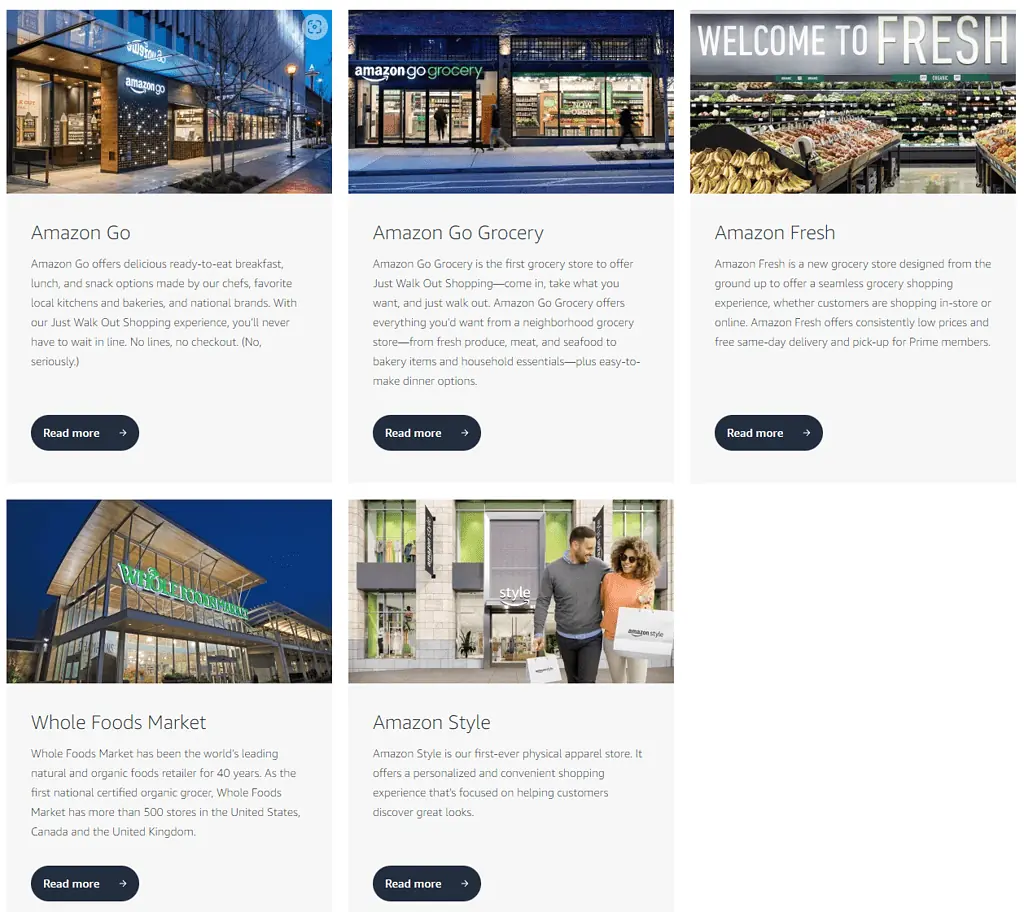
Domino’s Pizza
Domino’s Pizza is one of the most successful global pizza delivery chains, and it has embraced the bricks-and-clicks model to great success. Customers can order their favourite pizzas online through the website or mobile app, or visit one of the chain’s many physical stores. The company’s strategic decision to enable customers to purchase in both ways has helped them reach a wider customer base, leading to higher sales and profits.
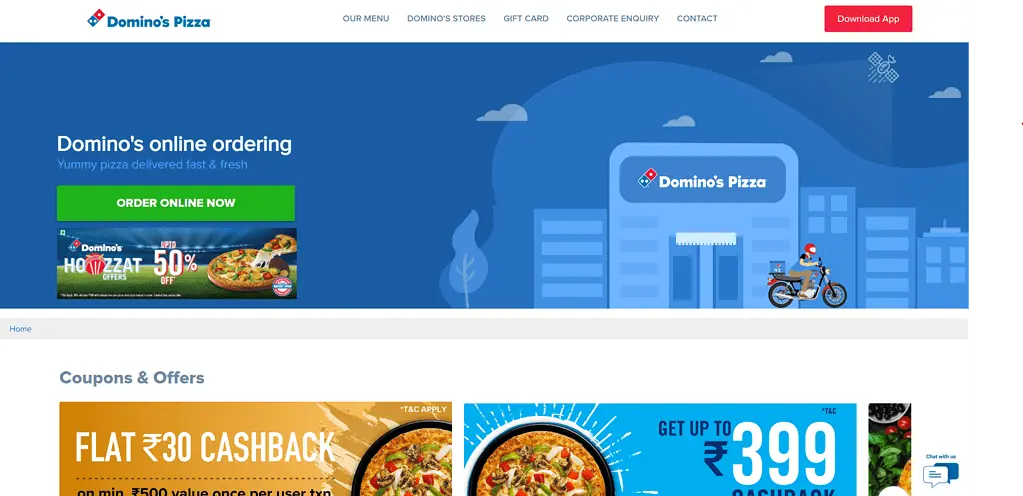
Final Thoughts
The bricks and clicks business model has become increasingly popular in recent years as it offers customers a blend of online and offline shopping experiences. This model provides businesses with multiple channels to interact with their customers, thereby increasing revenue streams and building customer loyalty.
While it offers several benefits such as convenience, flexibility, personalisation, and improved customer experience, it also has challenges such as high initial investment costs, complex logistics and supply chain management, and difficulty maintaining consistency between online and offline channels.
Ravpreet is an avid writer, prone to penning compelling content that hits the right chord. A startup enthusiast, Ravpreet has written content about startups for over three years and helped them succeed. You can also find her cooking, making singing videos, or walking on quiet streets in her free time.
